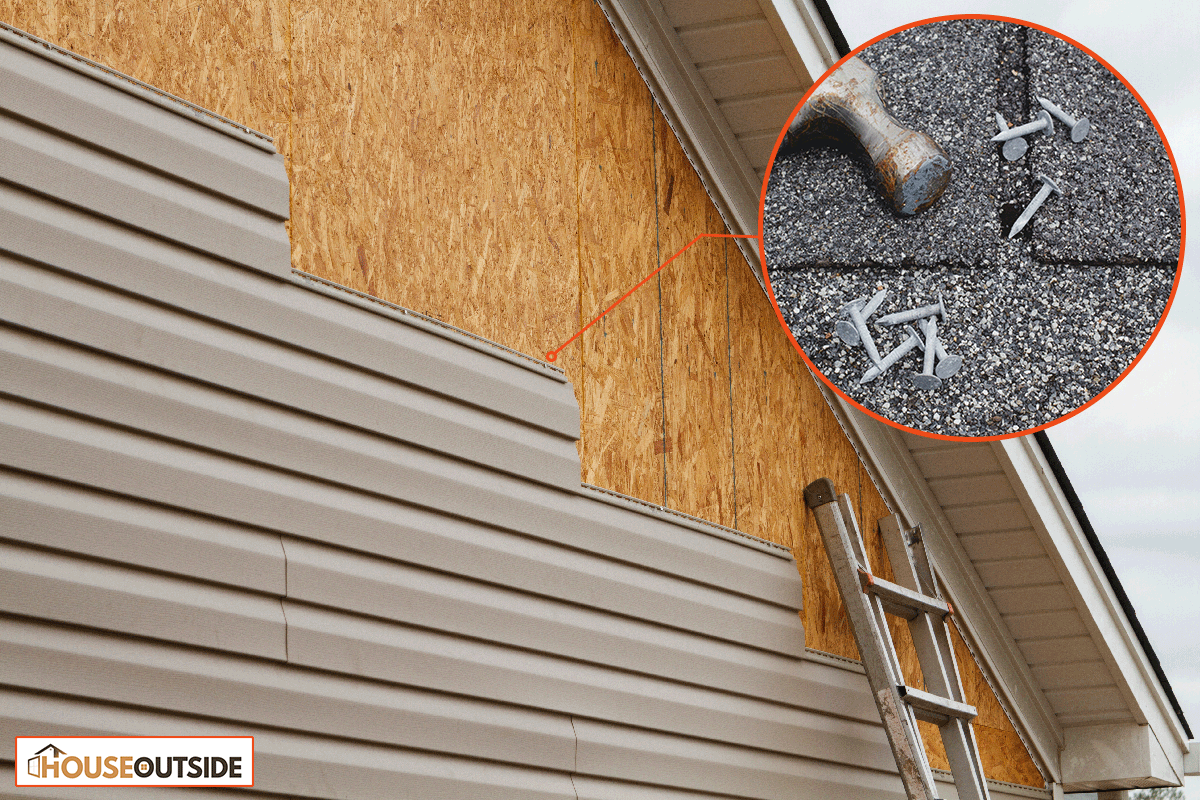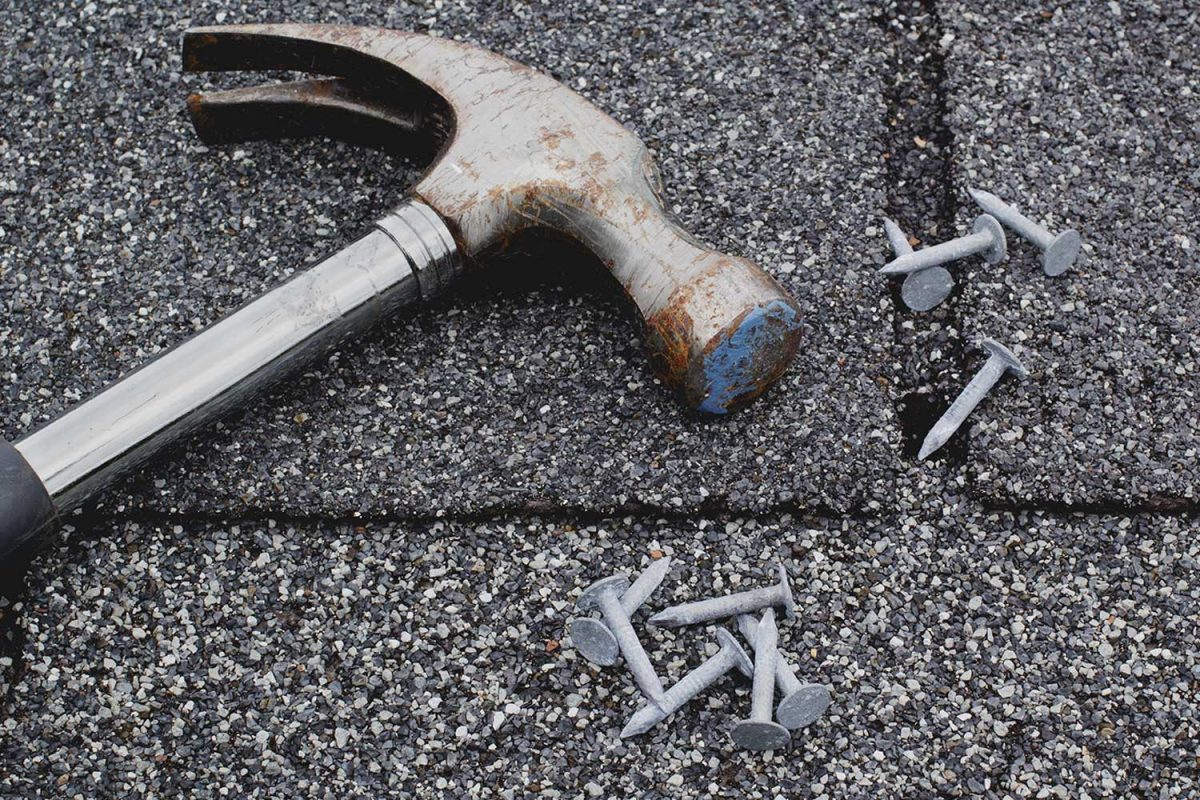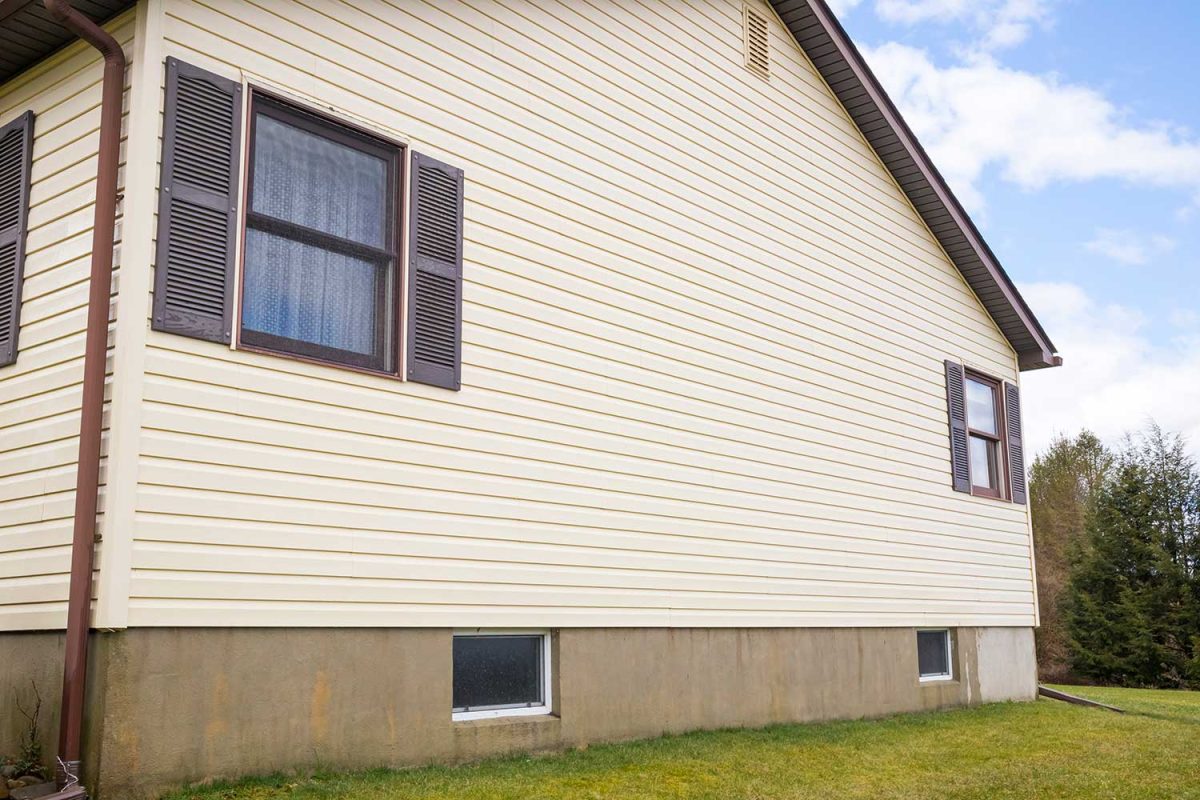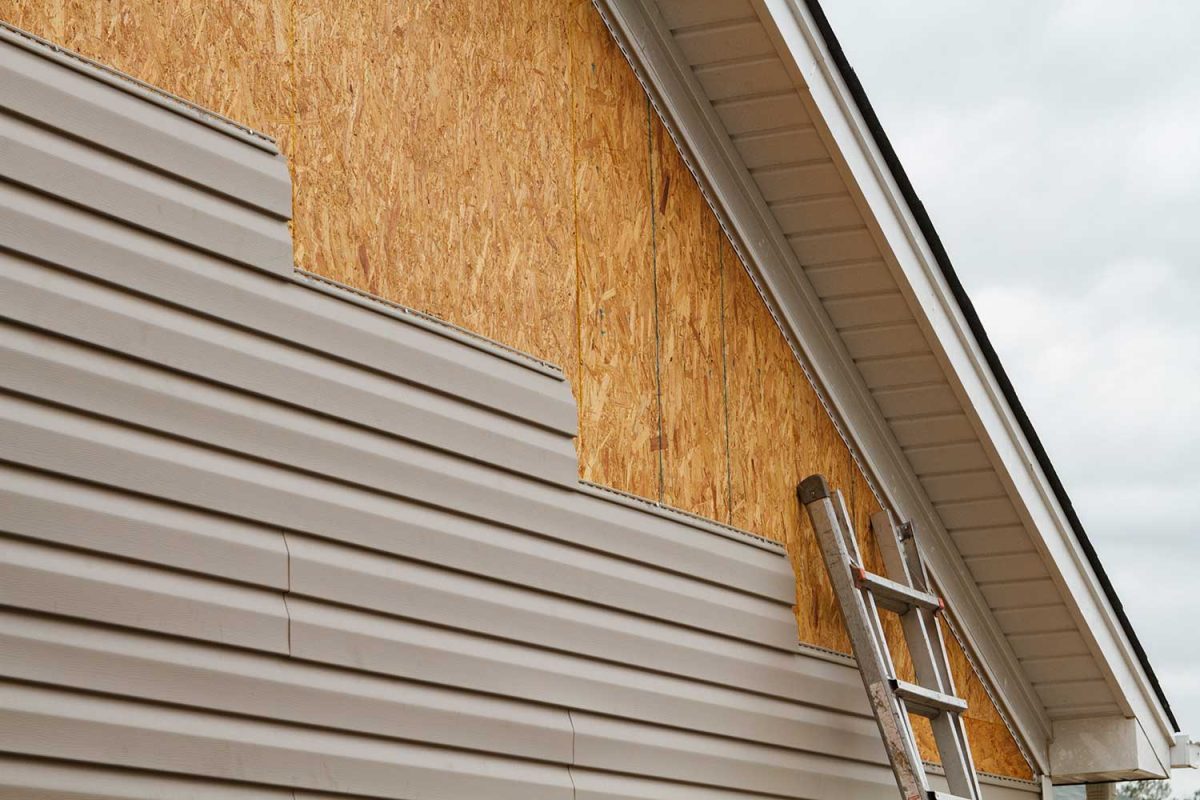It is important to use the right type of nails when installing vinyl siding. As a homeowner, you may be wondering if roofing nails can be used for vinyl siding. Luckily, we have done some research for you, and here is what we found.
Roofing nails can be used to install vinyl siding as long as the nail heads are hidden behind the siding. The nail heads should be completely out of sight. You can use aluminum roofing nails measuring 1-3/4 inches in length. The head diameter of the nails should be 3/8 inch.
While roofing nails are perfect for installing vinyl siding, knowing how to use them correctly is crucial. Keep reading to get detailed information that covers the use of roofing nails on vinyl siding.

Can Roofing Nails Be Used For Vinyl Siding?
If you want to install vinyl siding in your home, it is crucial to choose the right type of nail. As a plastic product, vinyl is a little more flexible than aluminum or wood, especially when the sun is directly overhead. Because of this, it is easier to get the nailing wrong.
You can use roofing nails for vinyl siding. However, when doing so, aluminum nails of 1-3/4 inches and 3/8 inch head diameter should be used. If there are additional materials between the foundation and the siding, a longer nail will be required.
When installing vinyl siding, roofing nails should be driven 3/4 inches into the hardwood base. The distance between the nail head and the nail hem should be between 1/32 to 1/16 inches.

How Roofing Nails Should Be Used On Vinyl Siding
Roofing nails below 1 inch should not be used to install vinyl siding. When nailed, vinyl siding should always be able to move freely. Vinyl siding requires flexibility, just like other types. It could bend or ripple if you fasten it too much, limiting flexibility.
As temperatures rise and the climate changes, the vinyl siding panel ends need more space to expand and shrink. Since most materials expand in the heat of the summer, the panels will require room to expand.
Additionally, you can cover the front of the roofing gun with siding nail adapters. To secure your vinyl siding, galvanized roofing nails are the best choice. When installing vinyl siding on your home, avoid using bent, crooked, or faced nails.

What Is The Difference Between A Roofing Nail And Siding Nail?
It can be challenging to tell the difference between a siding nail and a roofing nail. Although roofing nails are less expensive than siding nails, they are a whole different fastening material.
The fundamental distinction between the two nails is that siding nails are made to be permanently embedded into the siding, whilst roofing nails are made to come out.
Roofing nails will eventually need to be replaced, thus the form of its larger nail head makes it simpler to remove. Roofing nails also have smooth shanks. Siding nails have shanks with rings to enhance grip and resistance.
Similarly, roofing nails are driven flush with the surface, unlike siding nails. You don't want this type of nail to stand out and create an uneven roof line because it is designed to pierce through asphalt shingles to hold them to the roofing system.
The roofing nails are also shorter, no longer than 1-3/4 inches because the shingles aren't overly thick. Siding nails are longer because they should cut through a thick layer of vinyl panels.
The differences between the two fasteners are summarized below:
Roofing Nails
- Roofing nails are meant to be removed.
- They have a larger nail head.
- They have a removal shank with a smooth surface
- Roofing nails are 1-3/4 inches or less in length.
- They are designed to be fixed flush with the surface of the shingles.
Siding Nails
- Siding nails are meant to remain in place.
- They have a smaller head to hold them in place.
- They have a ring shank to assist in keeping them in place.
- Siding nails are up to 2-1/2 inches.
- They are not meant to be installed flush against the siding, but rather at an angle.
Is It Better To Nail Or Screw Vinyl Siding?
When installing vinyl siding, you can use screws, nails, or staples made of galvanized steel, aluminum, or corrosion-resistant material.
However, stainless steel screw is the best option, but it is very costly. Screws with vinyl coating are excellent, too. Regardless of the screw you choose, make sure it has a Phillips head because they are the simplest to use.
Stainless steel or aluminum fasteners are needed to secure aluminum trim components. As a result, all fasteners should be able to penetrate at least 1 1/4" (32mm).
Will My Roofing Nailer Shoot Siding Nails?

There may be a time when you need to use the siding nails when installing or fixing your home's roof. You may also need a roofing nailer to complete the task.
It is not advisable to use roofing nails to secure shingle panels together but it can be done. Since siding nails are thinner than those used to put shingles or sheathing on a home's exterior, they will likely bend out at the tip when you start nailing with them.
A few roofing nailers can use siding nails, although most roofing nailers don't. The largest size of nails your nailer can accept, and the size of the nails you are using will determine if it is possible to use the nailer.
How Long Should Nails Be For Vinyl Siding?
The nail should be about 11/2 inches in length. Most contractors agree that nails used for siding projects should be at least 11/2 inches long, and up to 2 1/2 inches if the backer board is being installed alongside the siding. A minimum diameter of 5/16 inches is required for nail heads.
Additionally, 3/8-inch-diameter roofing nails made of galvanized, stainless steel, or aluminum is used for vinyl siding. The nails are at least 1-3/4 inches long and able to pierce the base of the nailable object by at least 3/4 inches.

Does Vinyl Siding Need To Be Nailed Into Studs?
No, siding shouldn't be installed directly into studs. It can weaken the structure's stability. Only sheathing that offers a smooth, level surface is suitable for vinyl siding installation. Vinyl siding must never be put on studs without sheathing.
How Do You Fix Vinyl Siding That Keeps Coming Loose?

The wind is usually to blame for causing a section of aluminum or vinyl siding to come loose. Most of the time, homeowners can easily figure out how to replace loosened siding. Be careful not to bend aluminum siding and keep an eye out for sharp edges.
Follow these steps to fix your loose siding:
- Position the lower edge of the loose siding piece beneath the siding removal tool.
- As you proceed along the loose piece, use the tool to gently pull. You can determine the complete amount of the loose parts using this technique.
- Start snapping the loose edge back into position against the locking ridge once you have found all the loose areas.
- To make the attachment to stay together, you can run a thin bead of silicone caulk along the groove. Make sure to remove any excess caulk by wiping it away.
If the nail hem needs new nails, use the siding removal tool to carefully reveal the nail hem that requires new nails. Purchase roofing nails with a head that is at least 3/8 inch in diameter made of galvanized steel or aluminum. On the siding nail hem, hammer fresh nails into the slots' centers.
Can You Hammer A Nail Into Siding?
You can use a power nailer or a hammer to manually nail vinyl siding. The most crucial thing to keep in mind while nailing siding is the use of the right kind and size of siding nails.
To Wrap Up
When installing vinyl siding you can use roofing nails. However, it's crucial to carefully space them and to use long galvanized nails. You can carry out the task by yourself or seek the help of a professional.
If you enjoyed reading this post, here is an article you may also like:



